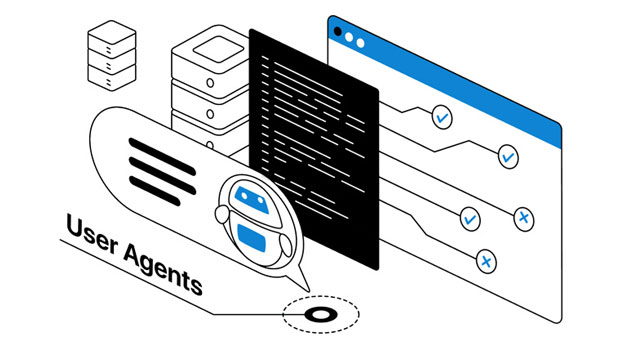In today's digital age, privacy and security have become paramount concerns for internet users. The increasing reliance on the internet for various services and transactions has led to a rise in demand for proxy services. residential proxies, which use real residential IP addresses, offer enhanced privacy and anonymity compared to traditional data center proxies. However, with numerous proxy services available online, users often question the safety and reliability of purchasing residential proxy services on proxy sites. In this article, we will explore the various aspects of purchasing residential proxy services, analyzing potential risks, benefits, and essential factors to consider when opting for such services. What Are Residential Proxy Services?Residential proxy services offer users access to a pool of real residential IP addresses, allowing them to browse the internet anonymously, bypass geo-restrictions, and access content that may be blocked or restricted in certain regions. Unlike data center proxies, which are often flagged or blacklisted, residential proxies are less likely to be detected by websites and online services. This makes them highly valuable for individuals and businesses engaged in activities such as web scraping, social media management, online shopping, or accessing region-specific content.However, as with any online service, there are concerns about the safety and legitimacy of residential proxy providers. To ensure a secure experience, users must carefully consider the source of the proxies and evaluate the reputation of the provider.Risks Involved in Purchasing Residential Proxy ServicesWhile residential proxies offer a wide range of benefits, there are inherent risks that users must be aware of when purchasing them from proxy sites. These risks can include:1. Legitimacy of the Proxy ProviderOne of the primary concerns when purchasing residential proxies is ensuring that the provider is legitimate. Not all proxy providers operate transparently, and some may engage in unethical practices, such as using bot-generated or fake residential IP addresses. These proxies may not offer the same level of anonymity and security as legitimate residential proxies. Therefore, it is crucial to research the provider thoroughly before making a purchase. Look for customer reviews, testimonials, and independent evaluations to gauge the reliability and trustworthiness of the service.2. Privacy ConcernsPurchasing residential proxies from unreliable sources can expose users to significant privacy risks. In some cases, proxy providers may collect and store user data, which could be sold or misused for malicious purposes. Additionally, some proxy services may inject tracking cookies or malware into the user’s browser, further compromising their privacy. To mitigate this risk, users should choose proxy providers that have a clear privacy policy, a commitment to data protection, and transparent practices regarding the handling of user information.3. Potential for IP Address BlacklistingAnother potential risk of using residential proxies is the possibility of the IP addresses being blacklisted by websites or online services. This can occur if the provider’s proxies are overused or abused, leading to the IP addresses being flagged as suspicious. If the proxies are blacklisted, users may experience slow speeds, connectivity issues, or be completely blocked from accessing certain websites. To minimize this risk, users should opt for providers that offer a diverse pool of residential IP addresses and have a proactive approach to managing and rotating proxies.4. Legal and Ethical ConcernsThe use of residential proxies can sometimes raise legal and ethical questions, particularly when it comes to activities such as web scraping, bypassing regional restrictions, or automating online tasks. Some websites may have terms of service that explicitly prohibit the use of proxies, and users could face penalties or legal action if they violate these terms. It is essential to understand the legal implications of using residential proxies and ensure that their use complies with the relevant laws and regulations in your country or region.Benefits of Using Residential Proxy ServicesDespite the potential risks, there are several advantages to using residential proxy services that make them an attractive option for many internet users:1. Enhanced Anonymity and PrivacyResidential proxies provide a higher level of anonymity compared to data center proxies. Since they use real residential IP addresses, they are less likely to be detected or blocked by websites, making them ideal for activities that require privacy, such as browsing the web, online shopping, or accessing geo-restricted content. With residential proxies, users can effectively mask their real IP addresses, making it difficult for websites and online services to track their online behavior.2. Better Access to Geo-Restricted ContentResidential proxies allow users to bypass geo-blocks and access content that is otherwise unavailable in their region. This is particularly useful for individuals who want to watch streaming services, access region-specific websites, or make online purchases from foreign retailers. By using residential proxies, users can appear as if they are browsing from a different location, granting them access to a wider range of content and services.3. Reduced Risk of DetectionResidential proxies are less likely to be detected and blocked compared to data center proxies. Websites and online services are more likely to flag and block data center IP addresses due to their high association with proxy networks. In contrast, residential proxies are associated with real individuals and are more difficult to distinguish from regular internet traffic. This makes residential proxies ideal for web scraping, social media automation, and other activities that require a low risk of detection.4. Greater Flexibility and ScalabilityResidential proxy services often offer a wide pool of IP addresses, allowing users to rotate IPs frequently. This flexibility helps prevent the overuse of a single IP address and reduces the likelihood of it being flagged or blacklisted. Moreover, many residential proxy providers offer scalable solutions that can cater to both individual users and large-scale businesses, making it easier to find a plan that suits your specific needs.How to Choose a Safe and Reliable Residential Proxy ProviderTo ensure that you are purchasing residential proxy services safely, it is essential to choose a reputable provider. Here are some key factors to consider when selecting a provider:1. Reputation and ReviewsLook for providers that have a solid reputation and positive customer reviews. Independent reviews and testimonials can provide valuable insights into the provider’s reliability, customer service, and overall quality of service.2. Privacy and Security PoliciesChoose a provider that offers clear privacy and security policies. Ensure that the provider is transparent about how they handle user data and what measures they take to protect your privacy. A good provider should have a strict no-log policy and avoid injecting tracking cookies or malware into your browsing experience.3. Customer SupportReliable customer support is essential when purchasing residential proxy services. Ensure that the provider offers responsive customer support channels, such as email, live chat, or phone support. This will help you address any issues or concerns that may arise during your use of the service.4. Service Level Agreement (SLA)Check if the provider offers a Service Level Agreement (SLA) that outlines the terms and conditions of their service. An SLA can help ensure that the provider is held accountable for the quality of their service and the performance of their proxies.ConclusionPurchasing residential proxy services on proxy sites can be safe, provided that users take the necessary precautions to choose a reputable provider. By considering factors such as reputation, privacy policies, and customer support, users can mitigate the risks and enjoy the benefits of enhanced anonymity, privacy, and access to geo-restricted content. As long as users are aware of the potential risks and make informed decisions, residential proxy services can be a valuable tool for improving online security and accessing a broader range of internet services.
Jul 18, 2025



































































